Finding the best solar generator is very difficult because there are hundreds of products with so many different features such as power output, battery capacity, and the number of outlets. To find the right product, you may have to check the specifications of each product and read many reviews.
Well, to help you make a better buying decision, we researched many products and after rigorous testing, we selected the best products. So here are our Reviews of the Best Solar Generators.
| Jackery Explorer 1000 (Best Overall)
  |
| EF ECOFLOW EFDELTA 1260Wh (Highest Running/Surge Power)
     |
| Jackery Explorer 500 (Cheapest yet Quality Solar Generator)
  |
| MAXOAK BLUETTI EB240
     |
| MAXOAK BLUETTI EB150
     |
| Jackery Explorer 240
     |
Best Solar Generators 2022
1. Jackery Explorer 1000 Solar Generator
- Great running watts as well as surge watts
- Rugged and sturdy build
- Can be recharged in 5 hours using two solar panels
- Faster solar recharge rates due to MPPT technology
- Three recharging methods including solar, household supply, and car battery
- Not TSA approved
- Might be low power output for some users
Jackery is a very respected brand in the solar generator industry, and Jackery Explorer 1000 is its latest model with the highest power capacity.
Moreover, it features a 1002Wh capacity battery that can deliver 1000 continuous watts and 2000 surge watts. Please note that it cannot support devices that are rated above 1000 watts.
This rechargeable battery features 3 standard pure sine wave AC outlets, 2 USB-C, and a Quick Charge 3.0 port to power multiple devices simultaneously.
By using two 100-watt solar panels, you can fully charge this solar generator in under 8 hours, and it is all thanks to its professional MPPT technology. However, this charging will reduce to 17 hours if you connect only one solar panel.
Additionally, the time for recharging through an AC outlet takes about 7 hours, and 14 hours from a 12V carport. This generator can be used in an RV to power onboard devices, outdoor parties, and as a home backup power too.
So overall, I would say it has ample energy and solid build quality to last many charging cycles.
2. ECOFLOW EFDELTA 1260Wh Portable Power Station
- Highest running watts and surge watts
- Can be directly charged using the wall outlet
- Superfast recharging speed (0 to 80% in 1 hour)
- Built-in MPPT controller
- Can connect 13 devices simultaneously to this solar generator
- 2-year warranty on the unit
- Less storage capacity
- Could be more lightweight
ECOFLOW EFDELTA offers the highest continuous power compared to any other solar generator on our list. The thing is most solar generators come with 1000-watt inverters, but in the case of EFDELTA, it is fitted with the 1800-watt power inverter.
So you will get 1800 watts of continuous power and 3300 watts of surge power. And with this amount of power, you can use this for any application, including home backup power, DIY & construction, camping & RV, and off-grid life.
Just like all the other solar generators, EFDELTA can be charged using an AC wall adapter, solar panel, and car charging port efficiently. It is compatible with any solar panel up to 400 watts.
It comes with a built-in MPPT controller, so there is no need to use the charge controller when charging it through solar panels.
However, if you like to charge it using the AC adapter, you will be thrilled to know that it takes about 1 hour to charge from 0 to 80%, so you don’t have to wait.
Thanks to its 13 output ports, you can run 13 devices simultaneously through this solar generator. Last but not least, you will get 2 years of warranty on this product.
3. Jackery Explorer 500 Outdoor Solar Generator
- Lightweight but powerful
- 500-watts continuous power and 1000-watts surge power
- Ideal for RVs, camping, and other outdoor activities
- five output ports to run multiple appliances
- Longer recharging time
- Cannot power bigger electronic devices
Jackery has again proved itself with this product as it is very reliable, resilient, and lasts longer. Jackery specializes in providing clean energy through its portable battery packs.
Fitted with a 500-watt pure sine wave inverter, It can generate 500 running watts and 1000 surge watts. There are so many advantages of a pure sine inverter: it ensures the safety of sensitive electronic devices and reduces the electric noise and heating in the connected devices.
To charge the Explorer 500, simply connect it to the Jackery SolarSaga 100W Solar panel and get full recharge in under 9.5 hours. And it takes about 7.5 hours when charging through an AC wall outlet and 16 hours if you choose the car’s 12V outlet.
What’s more, if you are off-grid, you can charge this unit using any typical generator with 80-watt input power.
It weighs only 13 pounds and has a top handle so you can easily carry it on trips. You will get an AC adapter, Car charge cable, and user manual with the product, and let’s not forget the included 2-year warranty.
4. MAXOAK BLUETTI EB240 2400Wh Solar Powered Generator
- Highest power storage capacity
- Well-designed for easy portability
- LCD display for tracking the performance of the generator
- Pure sine wave inverter for sensitive electronic devices
- Comes with many free accessories
- Cannot power appliance rated above 1000 watts
- Despite being a high-capacity generator it is fitted with a small inverter
MAXOAK BLUETTI EB240 is one of the highest-capacity solar generators available in today’s market. With its 2400Wh battery capacity, you can easily run devices like fans, lights, mini-refrigerators, and mini AC.
However, this solar generator is fitted with a 1000-watt inverter, so despite being a higher capacity solar generator, you will get a maximum of 1000-watt continuous power and 1200-watt surge power for up to 2 minutes. So this is the only downside of this generator.
The internal battery of this solar generator can last up to 2500+ life cycles, so it is very reliable. The battery management system protects this device from overvoltage, overcurrent, and short-circuit and includes many other safeguards as well.
It also includes many exciting features such as auto shut off after full recharge, frequency adjustment, and an LCD display that shows the remaining capacity, charging, discharging, and abnormal status.
The AC output is a pure sine wave, which is necessary for sensitive devices. The intelligent cooling control makes sure that the solar generator doesn’t heat up, whereas the outer aluminum alloy shell dissipates the heat quickly.
Furthermore, this unit is fitted with an MPPT controller that tracks the strength of the sunlight and adapts to the best charging speed.
5. MAXOAK BLUETTI EB150 1500Wh Solar Generator
- Easy to set up even during an emergency
- Lightweight but powerful for its size
- Can be used while charging (pass-through charging)
- Features many output ports
- Wall charger and solar charging cable included
- Intelligent cooling fan for temperature control
- Built-in battery thus cannot be replaced
- Fitted with only a 1000-watt inverter
BLUETTI EB150 is yet another great product from MAXOAK that we have added to our list. It has a capacity of 1500Wh, which is enough to run appliances like TV, mini-refrigerator, household dryer, CPAP, and much more.
However, it can only provide 1000 watts of continuous power because it is equipped with only a 1000-watt inverter, so all the connected appliances should be rated below 1000 watts.
This solar generator can be recharged in three ways. Charging through an AC wall outlet takes about 10 hours, and you can reduce this recharge time to 5.5 hours by using the 500-watt solar panel, and let’s not forget the convenient car charging facility.
Please note that solar charging speed may vary depending on the intensity of the sunlight.
The intuitive LCD screen offers useful information such as runtime, remaining power, battery status, real-time power input, and output. BLUETTI EB150 boasts an LG-certified battery that loses only 2% charge a month.
Thanks to its 7 output ports, you can connect 7 devices directly to this solar generator. It has an overload capacity of 1200 watts for 2 minutes and above 1200 watts, the generator will automatically shut off due to overload protection. And this unit is sold with a 1-year warranty.
6. Jackery Explorer 240 Solar Powered Generator
- The most lightweight and compact solar generator
- Ideal for charging small devices
- Flexible charging choices
- 24-month warranty
- Not useful for charging larger devices
- Not waterproof
Jackery Explorer 240 is another great choice for campers and outdoor enthusiasts. It is not only portable and lightweight, but it is also easy to use and doesn’t require any learning curve.
Due to its limited storage capacity, it can only be used to power small electronic devices such as smartphones, laptops, drones, and CPAP machines.
The manufacturer advertises 240Wh capacity that can charge 4 devices at once using 14.4V and 16.8Ah. This solar generator is designed with a pure sine inverter having 200-watt running power and 400-watt peak power. And it has one AC outlet, two USB-A ports, and one DC carport.
You can easily pair it with Jackery Solar Saga 60W/100W solar panel and the panels are not included in the package.
One of the biggest advantages of solar generators is that it does not require any fuel; hence there is no maintenance required.
Everything about this generator is portable, and you can even put it in a small bag and carry it on your road trip. Due to its lightweight and compact design, it is ideal for camping and other outdoor activities. Please note that the AC port can only run devices that operate at less than 200 watts.
What is a Solar Generator?
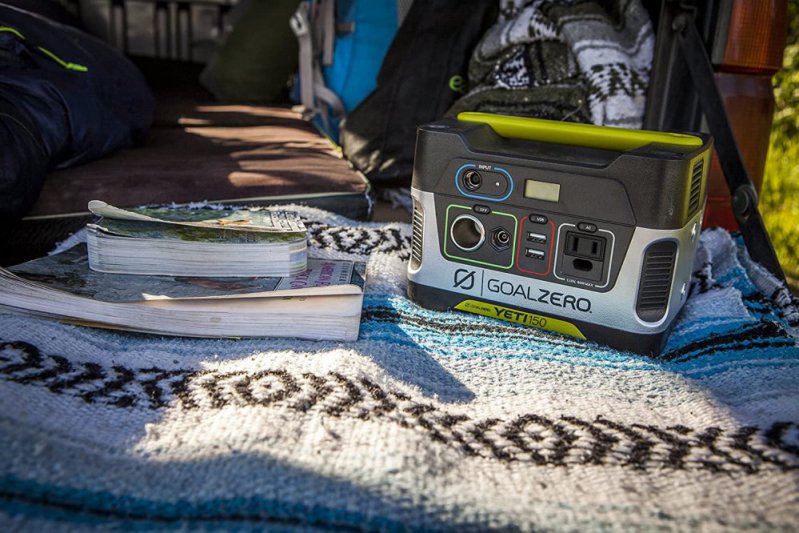

A solar generator is also known as portable power station; however, most people have misconceptions about them. Solar generators don’t generate electricity by burning fossil fuel, but they harness the solar energy from the sun and convert it to electricity with the help of solar panels and inverters.
The idea of converting solar power into electricity isn’t new, but packing this technology into one portable device is new. We are seeing more of these devices coming into the market recently. These devices are very small and compact, so you can use them as emergency backups during your trips or camping.
How Do Solar Generators Work?
All solar generators consist of the following components; solar panels, charge controllers, batteries, and an inverter.
First of all, the solar panel converts solar energy into electricity, and with the help charge controller, it is stored in the battery in the form of DC power. The DC power then is converted to AC power using the inverter, which is the same as the power coming AC outlet in your house.
Things to Consider When Choosing the Best Solar-powered Generator
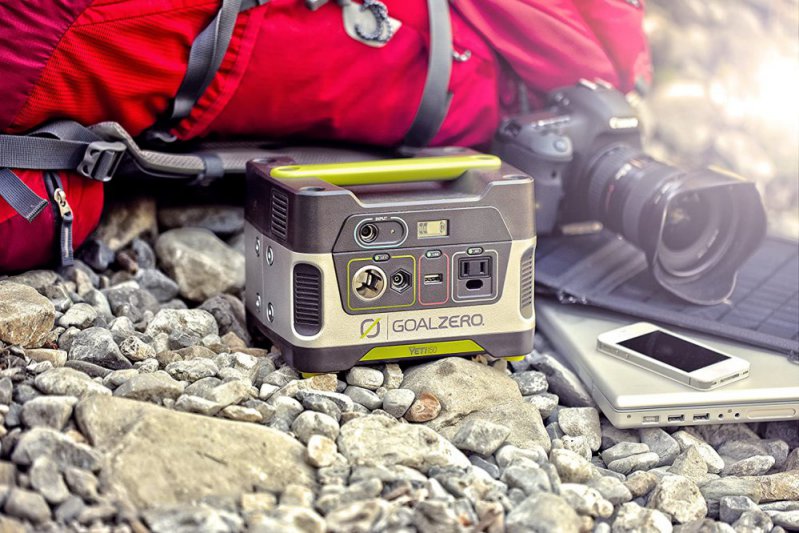

When it comes to choosing the best solar generator, you have to be very clear about your needs as it can break your bank, especially when you have a limited budget. You need to consider many factors, including power output, battery capacity, and much more. So keep reading this post to know more about it.
1. Solar Panels


The capacity of the solar panel is measured in watts. By multiplying the hours of exposure, it gets daily with the output wattage; you will get the total power produced by the solar panel in one day.
For example, a 50-watt panel gives you about 350 watts of power when receiving 7-hours of sunlight.
However, this power production rate can vary because of cloudy days and seasonal changes. Moreover, the efficiency of the solar panel also affects power output. Basically, there are three types of solar panels available, which we have discussed below.
- Monocrystalline Panels: These are the most efficient panels that offer about 15-20 efficiency but are expensive. It is made from single-crystal silicon wafers and can easily operate under high-temperature.
- Polycrystalline Panels: These panels are made from melted fragments of silicon, and the electron can’t move freely in these fragments, so this panel is less efficient (13-16% efficiency) than the monocrystalline panels. Due to this reason, they are cheaper and can be seen widely in cheaply made solar panels.
- Thin Film Panels: These panels are usually lightweight and cheap, and they offer 7 to 13 percent efficiency, which is very low. However, they require a large footprint (almost double) to produce the same power as the monocrystalline panels. So this type of panel is not a viable option for solar generators. I believe this is the cheapest panel available, but you get what you pay for.
2. Battery Capacity


Battery capacity is a crucial factor when choosing any solar generator. It is measured in watt-hour; however, many people measure the battery capacity in amp-hour, which is not right because you don’t know the voltage of the battery.
The battery capacity can’t tell you how much continuous power it will provide at any given time. For that, you have to check the inverter rating of the solar generator. Also, keep in mind that solar generators run on stored battery energy.
If you have panels that can generate thousands of watts, but if the battery capacity is only 200 watts, then there is no meaning in such high-capacity panels.
However, some high-end solar generators come with batteries that can power appliances simultaneously while it is being charged. The batteries of most solar generators cap out at 2500 to 3000 watt-hours so you cannot run bigger appliances.
3. Inverter Rating
The inverter converts the DC power of the battery into AC power. The inverter rating tells you how much power it can provide at any given time, and there are two ratings: continuous power and surge power. The power rating of an inverter should always be equal to or greater than the power generated by the system.
This means that if a 2500Wh solar generator is fitted with a 500-watt inverter, you will only get 500 watts of running power. So your high-capacity generator will be wasted. Pure sine inverters are costly compared to modified sine wave inverters, but they reduce wear and heating in connected appliances such as TV, microwave, and AC. Pure sine wave inverters are also used in the best inverter generators.
So if you need to run some high-power-consuming appliances, then we advise you always to choose the solar generator with high running watts.
4. Battery Type
Mainly there are two types of batteries used in solar generators, which are lead-acid batteries and lithium-ion batteries.
1. Lead-acid batteries:
These types of batteries are the same as those used in car and household applications such as UPS and emergency backup systems. They are very cost-effective but have a shorter life span, use much more space, and are heavy. Deep-cycle batteries can handle repeated deep discharges, meaning it drains till 0% and still last longer, but as I said, they are much larger.
2. Lithium-ion batteries:
These batteries are widely used in literally all the devices you see today, including smartphones and cordless power tools. They are lightweight, compact, and have a longer life expectancy compared to lead-acid batteries. Most solar generators use lithium-ion batteries due to their less weight and small size despite the high price range.
5. Charge Controllers
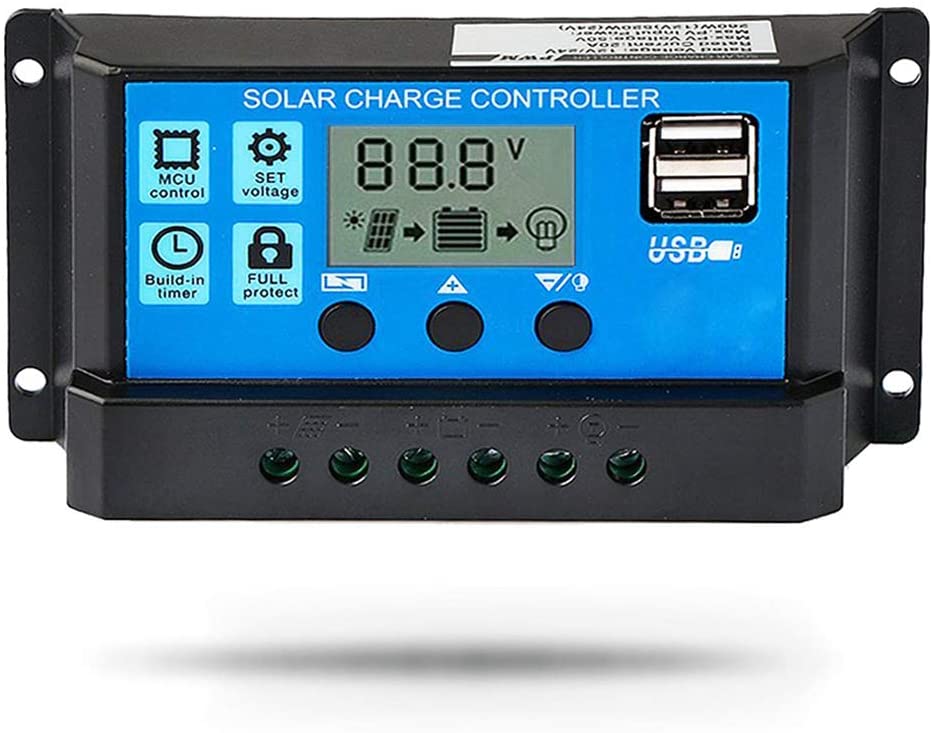

First of all, the solar panel converts solar energy into electricity, and it is stored in the battery. But the power from the solar panel is unregulated and unclean. That’s when the charge controller comes in.
A charge control acts as a voltage regulator, and also it controls the current going from solar panels to batteries. In simple words, it cuts the connection between the solar panel and the battery when it is fully charged; thus, it protects the batteries from overcharging.
All the solar generators these days come with in-built charge controllers so you can directly connect the solar panels. Typical charge controllers are not that efficient and suffer major power loss because they don’t let the voltage level exceed their capacity.
However, the latest models that use 3-stage or maximum power point tracking (MPPT) can draw more power from the system; hence they are very power-efficient.
6. Weight
The weight of the solar generator ranges from 10 to 200 pounds, depending on its capacity. The battery accommodates the major weight, and the weight of the solar panel is not included in the overall weight. As said earlier, the latest solar generators feature lithium-ion batteries, which makes them very lightweight.
The biggest solar generator (2400Wh) weighs about 48-pounds, so I think you can easily carry it around. So there are not many issues about the weight of the unit.
7. Extra Features
Before making a buying decision, take a look at some of the extra features that your generator should have so that your life will become much easier when operating any solar generator.
- Extra AC outlets
- USB ports and Quick Charge ports
- LCD display
- Replaceable batteries
- Wireless connectivity
- Expandability of systems such as battery
Things to avoid when choosing any solar generator
Here are some of the points about what to avoid when purchasing any solar generator.
- Avoid choosing generators with a large capacity battery but have a small capacity inverter because you will not be able to use the full energy of the generator.
- Don’t make an impulsive decision when buying. Do proper research, including your power needs and the features of your selected solar generator.
- Generators that come with built-in solar panels don’t last long because the batteries heat up pretty quickly, and they are built in such a way that they can’t be repaired.
- Some kits are very expensive, so instead, you can purchase all the accessories separately, which are solar panels, cords, and charging cables.
What Size Generator Do You Need?
All solar generators have two important ratings; running power and surge power, and both are measured in watts.
Running power or continuous power is power; the generator can supply continuously for a given period. Whereas surge power or starting power is the amount of power, a generator can deliver for a fraction of a second, which is essential for the starting process of inductive loads.
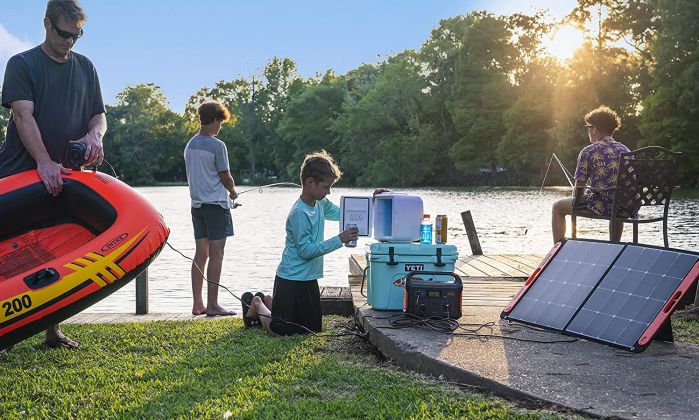

To calculate your power needs, make a list of appliances you will be running on a solar generator. Add the continuous watts of all the devices and multiply by how many hours you want to use them.
For example, a mini-refrigerator uses 600 watts of power daily, and your solar generator has a 1200Wh capacity. So it will cost you about half the power of the solar generator, and you are left with 600Wh capacity daily.
Always check the running power and surge power in solar generators because both are equally important. For example, if you have an appliance that needs 500-watt continuous power and 2000-watt surge power and the solar generator has a maximum 1000-watt surge power capacity, your appliance will not work.
Practically speaking, most solar generators don’t work with high power-drawing appliances because of their limited battery capacity, but still, you can run some basic household appliances.
Advantages of owning a solar-powered generator
We all agree that solar-powered generators are superior to conventional fossil-fuel generators in every aspect. There are so many advantages to that, which we are going to discuss here.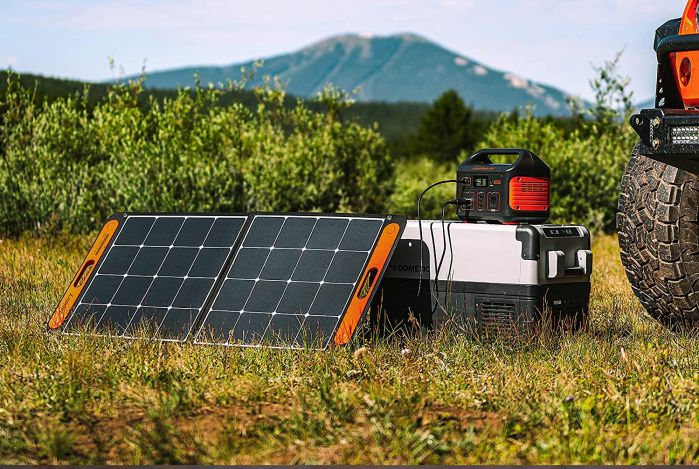

1. Eco-Friendly
Consumption of fuel in vehicles and electricity generation mainly contributes to global warming and the production of CO2. If you use solar energy only about 25% of the time in your house, you can decrease 6% CO2 per year, which is a great step towards making the earth pollution-free.
2. Investments in long-term savings
A solar generator is not that costly, but even if it is, it will save you a lot of money in the long run. Because once you purchase a solar generator, it will pay off all future electricity bills. And once you have recovered all the money you invested in a solar generator, all the future electricity will be free.
According to one survey, if you use solar energy for 25% of your house’s total capacity, you will save about 400$ a year.
3. Great for indoor use
Unlike gas or propane-powered generators, portable solar generators can be used even indoors because they don’t use any fossil fuel, which is why there is no production of toxic fumes and gases. When a power outage occurs, there is no need to fuel up your generator outside in the dark and lay cables because you can easily carry the solar generator from one room to another.
4. Noiseless operation
There is no engine hence no combustion of fuel in the solar generator, so the generator doesn’t produce any noise. So you can easily use it wherever you want, including a camping area where there is noise restriction. The noise output of gas generators ranges from 45 to 85 decibels, and every 10-decibel increase in noise will become unbearable to the human ear.
5. No maintenance and ease of use
There is no moving part in the solar generator; therefore, no maintenance is needed whatsoever. During the day, the sunlight will charge the batteries, and if you are using an on-grid system, you can directly power the appliances in your house. At night, the battery provides the power to run appliances, so as long there is sunlight, you don’t have to worry about power outages.
But in the case of the gas/propane generators, you have to keep close tabs on fuel level, manage oil and keep it away from the house to eliminate CO2 buildup. So there is a lot of hassle involved in running a gas-powered generator.

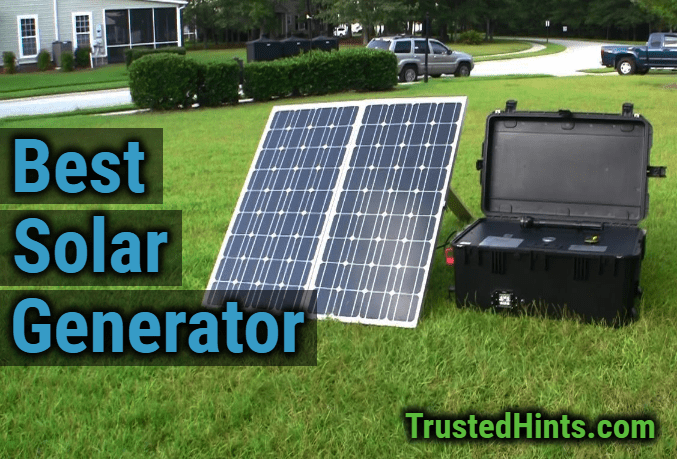
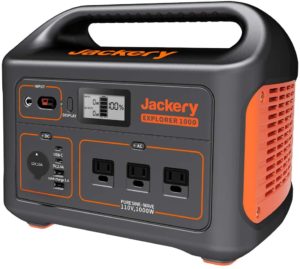
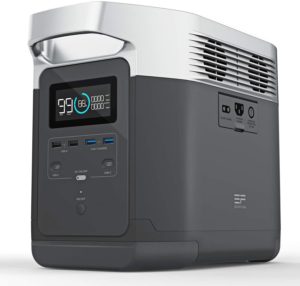
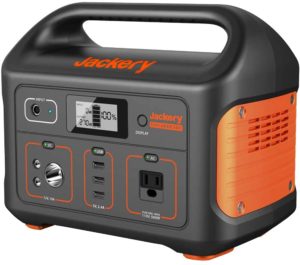
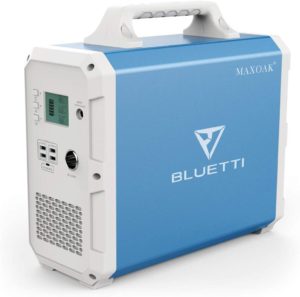
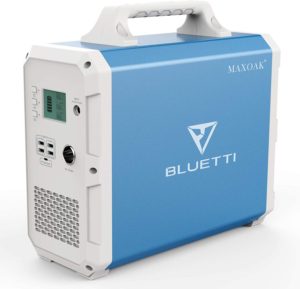
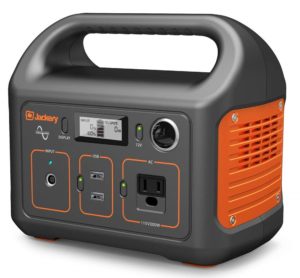
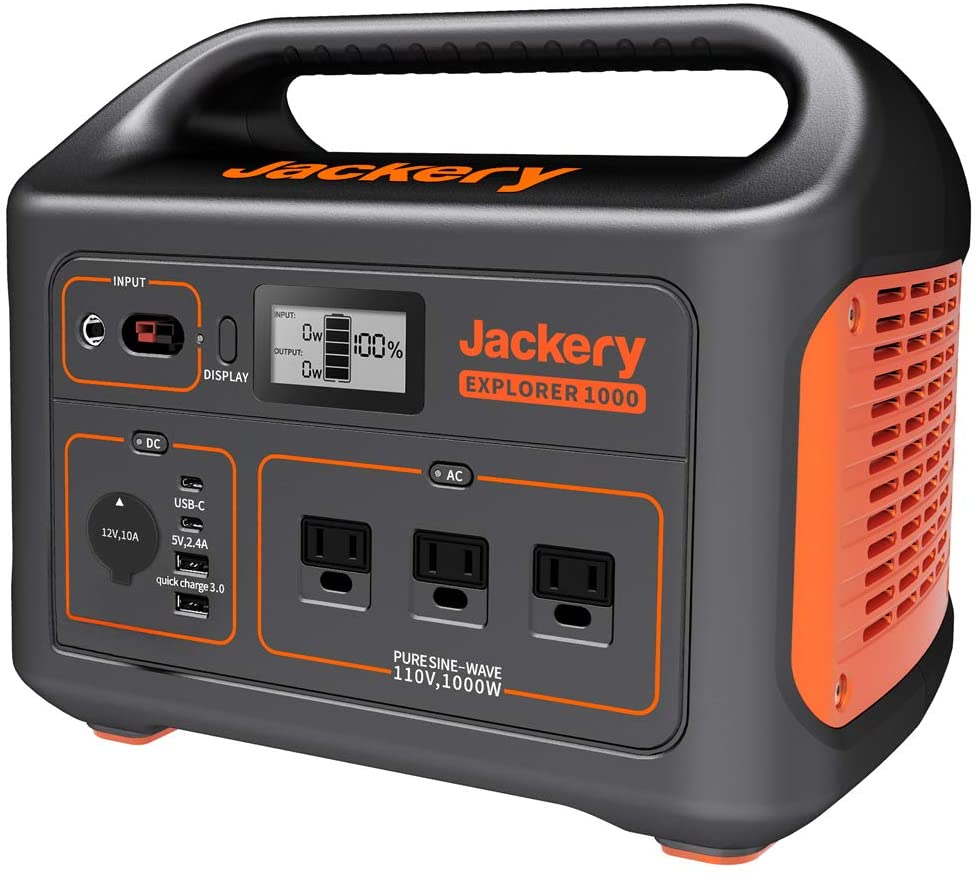

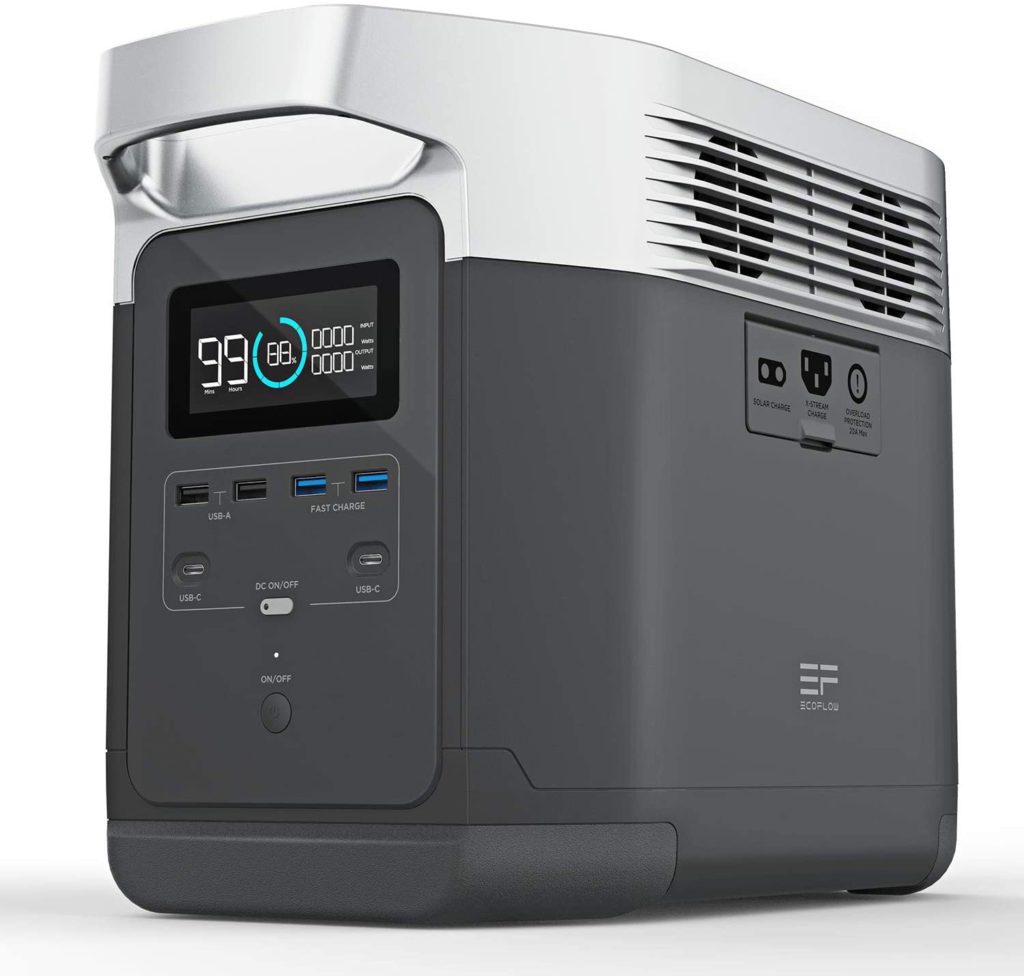
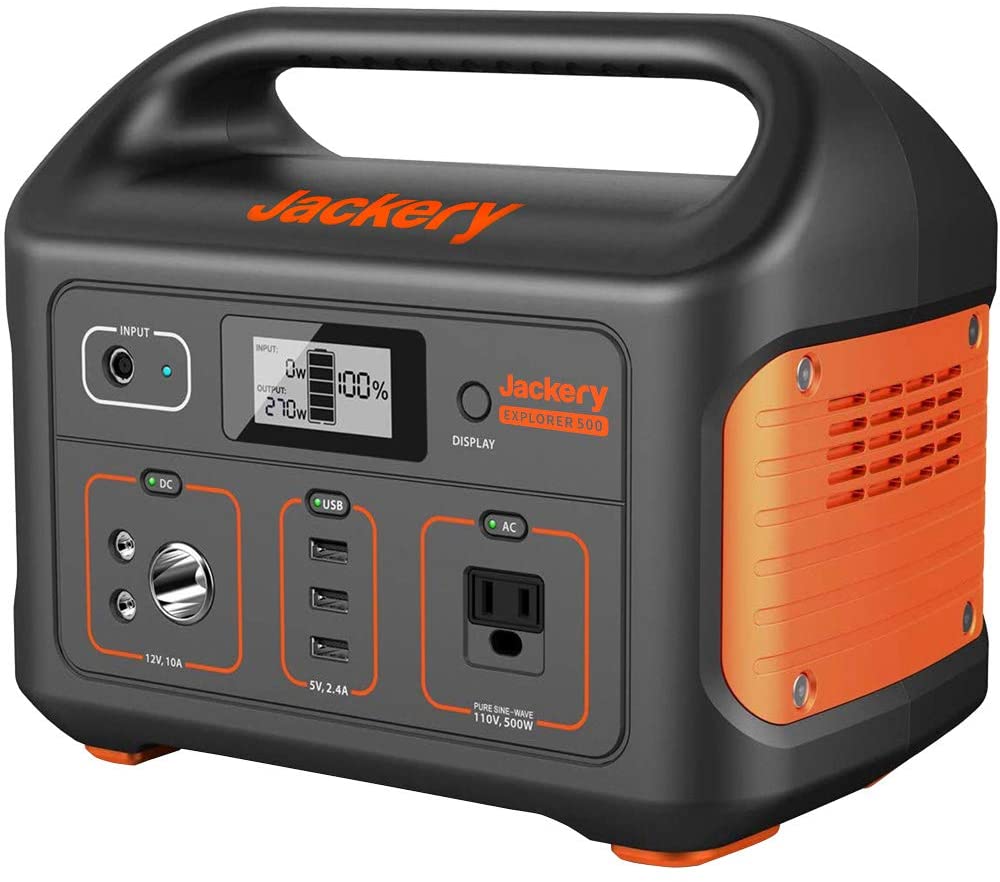
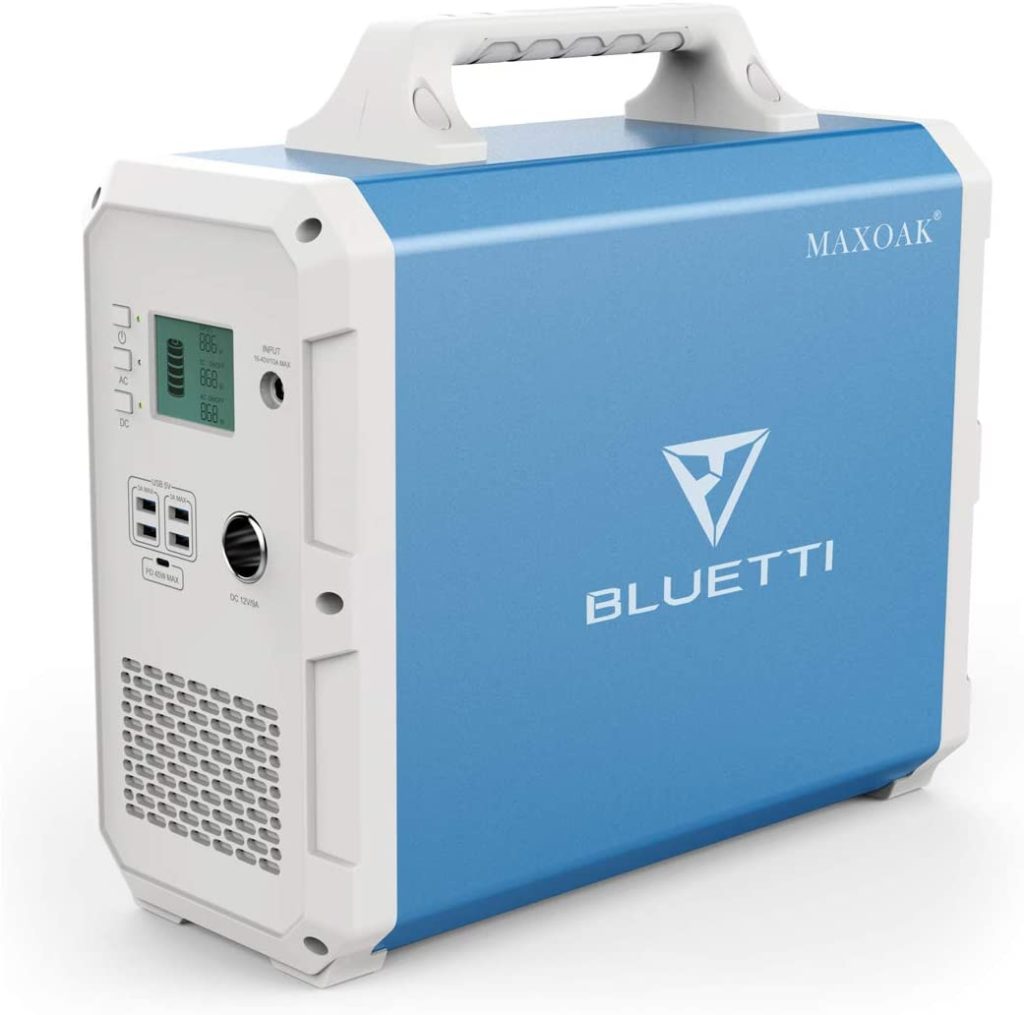
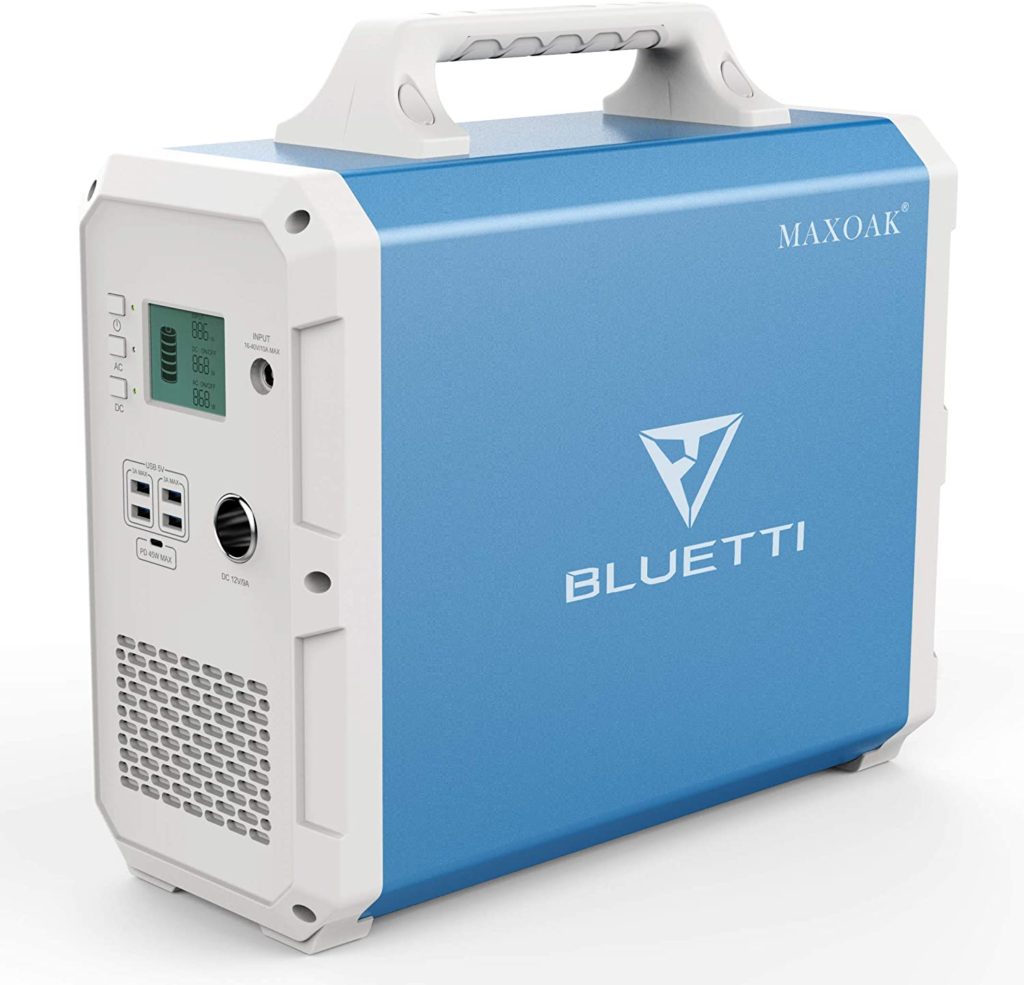
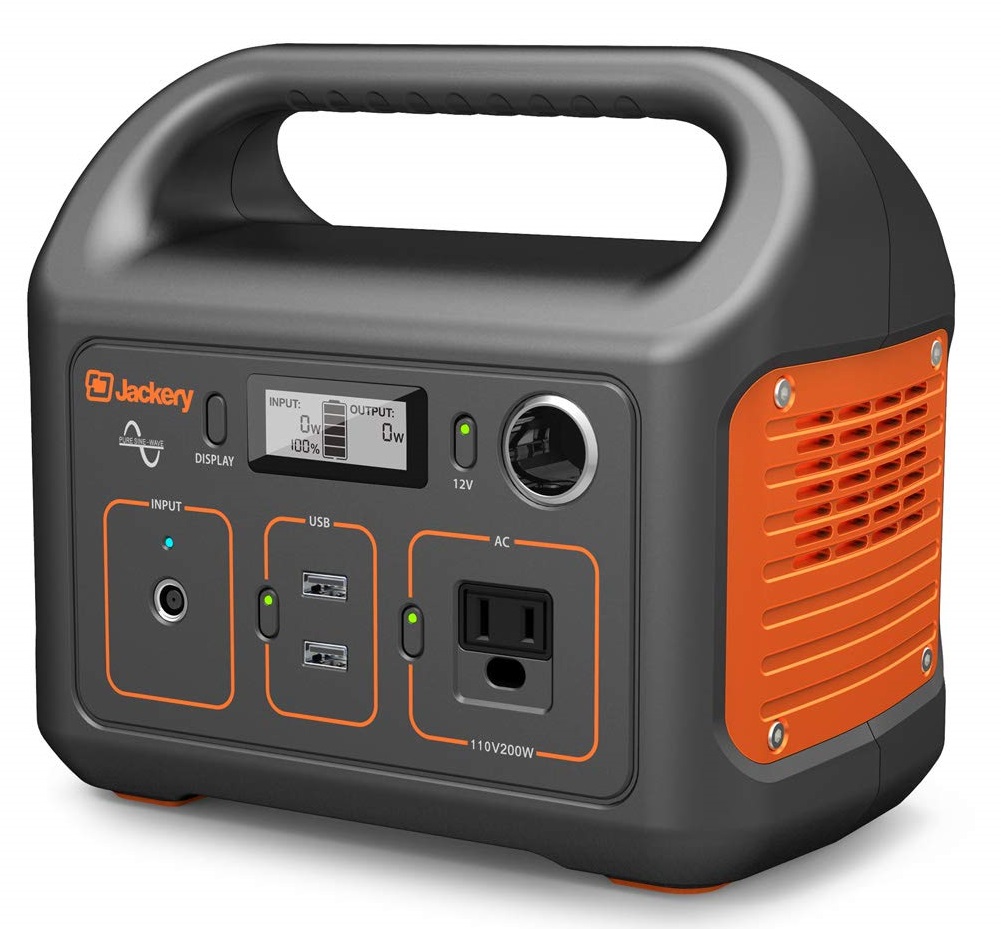
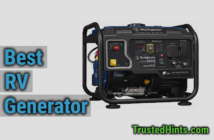


3 Comments
Hi:
Receive a friendly salute from Puerto Rico.
Congratulations. This is a very complete information for the benefit of all customers.
Thanks for all your assistance and efforts.
I am very grateful for all this important information regarding solar power.
Thanks,
Juan
Question: Can I connect a Solar Generator to my home Breaker’s Box? How is the best way to do it? (Grid-tied system as a backup system for emergencies power-off). I shall look forward for your answer.
Thanks
Solar generators are not powerful enough to connect to home’s breakers box because they offer limited power for a limited time. Of course, you can connect it to your house’s breaker box without any problems but as you run more appliances, it will drain out pretty quickly.
I’ve been using Jackery Explorer 240 for a few camping trips and it was really helpful. I was able to cook stuff in a portable oven, make some eggs and pasta on a portable cooktop, charge all the phones we had. The solar panel helps a lot because it was really sunny and I didn’t have to worry about this thing going out of charge.